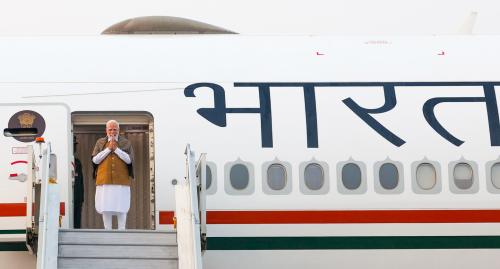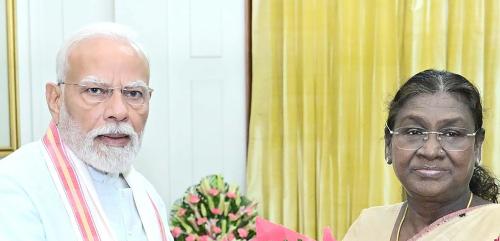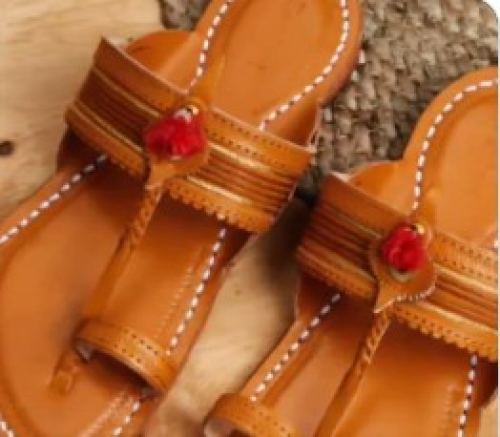Special to India Tribune
Street fashion and designer wear in India represent two distinct worlds within the country's vast and diverse fashion landscape. Each holds its unique place in the fashion ecosystem, reflecting different aspects of culture, lifestyle, and societal norms. While designer wear is often associated with high-end luxury and elite status, street fashion is rooted in the everyday life of urban youth, often more experimental and accessible. The growing influence of both on Indian fashion is a reflection of the complex interplay between tradition, modernity, accessibility, and exclusivity in Indian society.
Designer wear in India has traditionally been synonymous with exclusivity, luxury, and the high fashion market. For years, it was the preserve of the elite — people who had the means to afford expensive couture and prêt-à-porter collections from well-known designers. Names like Sabyasachi Mukherjee, Manish Malhotra, Anita Dongre, Abu Jani Sandeep Khosla, and Tarun Tahiliani dominate the Indian designer fashion scene, catering to an affluent clientele that values bespoke tailoring, intricate craftsmanship, and opulent fabrics. Designer wear often carries an air of prestige, as it is linked with status, social capital, and sometimes a sense of timeless elegance.
Sabyasachi Mukherjee’s bridal collections, for example, have become synonymous with grandeur. His use of rich textiles, embroidery, and the fusion of traditional and modern aesthetics has made him one of the most celebrated designers not just in India but globally. Manish Malhotra, who has designed costumes for Bollywood's biggest stars, also represents designer fashion at its most glamorous, focusing on contemporary Indian wear that blends Western silhouettes with traditional embroidery and fabrics. These designers have helped popularize couture among Indian women who prefer luxurious and occasion-specific clothing, including weddings, festivals, and gala events.
Designer wear in India often represents more than just clothes — it is a statement. The garments are meticulously crafted, the fabrics are expensive, and they offer exclusivity. Even within the wedding industry, high-end designers cater to the elite, creating custom-made outfits for brides and grooms that embody opulence and intricacy. The price of such garments reflects not only the quality of the materials but also the artistic design, brand name, and the cultural significance they carry. The trend of wearing designer clothes has become a symbol of wealth, sophistication, and refinement in India.
In contrast, street fashion in India is a more fluid, democratic, and inclusive aspect of the country’s fashion scene. Street fashion, particularly in urban areas like Mumbai, Delhi, Bengaluru, and Pune, is heavily influenced by global fashion trends but remains rooted in local contexts. Street fashion in India is a reflection of youth culture, an amalgamation of influences from Bollywood, global pop culture, and traditional Indian elements. It’s characterized by its accessibility, self-expression, and a break from traditional norms. For instance, young Indians now blend denim jeans, sneakers, oversized t-shirts, and jackets with traditional Indian accessories, creating a look that is both eclectic and stylish.
In cities like Delhi, Mumbai, and Bangalore, young people often wear streetwear brands, both Indian and international, that are reflective of this dynamic fusion. Brands like H&M, Zara, and Adidas, alongside Indian streetwear labels like Bhaane, Koovs, and The Souled Store, have contributed to the rapid rise of street fashion. Street fashion in India often combines comfort with individuality, with many opting for casual yet trendy clothing like graphic tees, joggers, sneakers, and hoodies. These clothes are not necessarily about luxury but about being able to make a style statement without breaking the bank.
Street fashion also frequently adopts influences from pop culture, particularly Bollywood and Western music videos. For example, the influence of American hip-hop culture, seen in baggy pants, oversized jackets, and sneakers, can be observed in the outfits worn by the youth of India. At the same time, Bollywood celebrities like Ranveer Singh and Deepika Padukone have popularized street style with their offbeat, quirky outfits that combine high fashion with casual street sensibilities. Ranveer Singh, for instance, is often seen wearing bold patterns, vintage clothing, and unorthodox styles that combine designer pieces with streetwear aesthetics. His fashion choices make a statement about individuality and break traditional fashion boundaries, embodying the street fashion ethos of freedom and personal style.
Another important characteristic of street fashion in India is its accessibility. While designer wear is often out of reach for the average Indian, street fashion offers a way for young people to engage with current trends without the heavy price tag. Popularization of fast fashion brands has made it easier for individuals from various socio-economic backgrounds to adopt fashionable clothing. It is not just about the clothes themselves but about the way they are worn, mixed, and matched. Street fashion in India allows for creativity and improvisation, as young people remix older clothes with newer ones, upcycle garments, and use accessories to create fresh looks.
Social media plays a crucial role in the growth of street fashion in India. Instagram, YouTube, and TikTok (until its ban in India) have become platforms for young Indians to express their fashion choices, showcase their personal style, and get inspiration from global and local influencers. Many streetwear brands in India have gained popularity through social media platforms, where influencers showcase their daily outfits or 'haul videos' and fashion advice. This has democratized fashion, allowing people from different walks of life to share their take on trends, thus contributing to a vibrant, ever-changing fashion scene.
The rise of street fashion has also led to the growth of a new wave of Indian designers who cater to this market. Labels like Raw Mango, Doodlage, and Buti work with sustainable fashion and are experimenting with new forms of street-style clothing that incorporate Indian textiles and crafts. These designers are responding to a shift in consumer preferences, where youth demand clothing that is not just stylish but also environmentally and ethically sound. The fusion of streetwear with traditional Indian techniques, like handloom weaving or block printing, is an example of how Indian street fashion is adapting and evolving. This fusion enables a connection with the past while keeping up with the global fashion scene, something that designer wear brands can also incorporate into their collections, though in a more luxury-oriented manner.
While designer wear continues to reign supreme at the upper echelons of society, street fashion has democratized style, allowing people from all walks of life to participate in global fashion trends. Both styles, however, are interdependent in many ways. The streets often inspire the runways, with designers picking up trends from street culture, translating them into haute couture or high-street collections. For instance, the oversized silhouette, baggy pants, and urban accessories found in street fashion are sometimes adopted by luxury fashion houses, as they cater to a broader audience while still maintaining exclusivity.
Ultimately, the difference between street fashion and designer wear in India lies not just in their price and exclusivity but also in what they represent. Designer wear is a symbol of wealth, status, and luxury, often serving as an investment and a statement piece. Street fashion, on the other hand, represents youth culture, creativity, and a break from traditional fashion norms, making it accessible, inclusive, and constantly evolving. Both are essential to the evolving landscape of Indian fashion, catering to different tastes, cultures, and socio-economic classes. Together, they reflect the dynamic, diverse, and rapidly changing nature of fashion in India, where the traditional meets the modern, and luxury coexists with street style.











